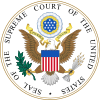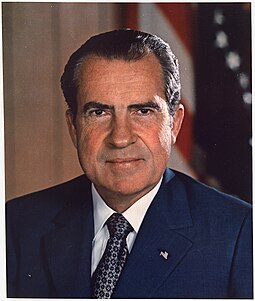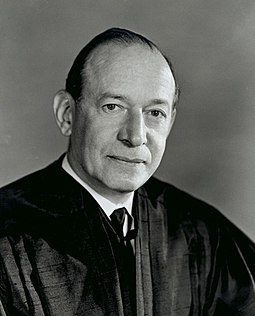
The First Amendment to the United States Constitution prevents the government from making laws which regulate an establishment of religion, or that would prohibit the free exercise of religion, or abridge the freedom of speech, the freedom of the press, the freedom of assembly, or the right to petition the government for redress of grievances. It was adopted on December 15, 1791, as one of the ten amendments that constitute the Bill of Rights.
Eldred v. Ashcroft, 537 U.S. 186 (2003), was a decision by the Supreme Court of the United States upholding the constitutionality of the 1998 Sonny Bono Copyright Term Extension Act (CTEA). The practical result of this was to prevent a number of works from entering the public domain in 1998 and following years, as would have occurred under the Copyright Act of 1976. Materials which the plaintiffs had worked with and were ready to republish were now unavailable due to copyright restrictions.
Roe v. Wade, 410 U.S. 113 (1973), was a landmark decision of the U.S. Supreme Court in which the Court ruled that the Constitution of the United States protects a pregnant woman's liberty to choose to have an abortion without excessive government restriction. It struck down many U.S. federal and state abortion laws, and prompted an ongoing national debate in the United States about whether and to what extent abortion should be legal, who should decide the legality of abortion, what methods the Supreme Court should use in constitutional adjudication, and what the role of religious and moral views in the political sphere should be. Roe v. Wade reshaped American politics, dividing much of the United States into abortion rights and anti-abortion movements, while activating grassroots movements on both sides.
Schenck v. United States, 249 U.S. 47 (1919), was a landmark decision of the US Supreme Court concerning enforcement of the Espionage Act of 1917 during World War I. A unanimous Supreme Court, in an opinion by Justice Oliver Wendell Holmes Jr., concluded that defendants who distributed flyers to draft-age men urging resistance to induction could be convicted of an attempt to obstruct the draft, a criminal offense. The First Amendment did not alter the well-established law in cases where the attempt was made through expressions that would be protected in other circumstances. In this opinion, Holmes said that expressions which in the circumstances were intended to result in a crime, and posed a "clear and present danger" of succeeding, could be punished.
Griswold v. Connecticut, 381 U.S. 479 (1965), was a landmark decision of the US Supreme Court in which the Court ruled that the Constitution of the United States protects the liberty of married couples to buy and use contraceptives without government restriction. The case involved a Connecticut "Comstock law" that prohibited any person from using "any drug, medicinal article or instrument for the purpose of preventing conception". The court held that the statute was unconstitutional, and that "the clear effect of [the Connecticut law ...] is to deny disadvantaged citizens ... access to medical assistance and up-to-date information in respect to proper methods of birth control." By a vote of 7–2, the Supreme Court invalidated the law on the grounds that it violated the "right to marital privacy", establishing the basis for the right to privacy with respect to intimate practices. This and other cases view the right to privacy as a right to "protect[ion] from governmental intrusion".
Hustler Magazine, Inc. v. Falwell, 485 U.S. 46 (1988), was a landmark decision of the United States Supreme Court ruling that the First and Fourteenth Amendments prohibit public figures from recovering damages for the tort of intentional infliction of emotional distress (IIED), if the emotional distress was caused by a caricature, parody, or satire of the public figure that a reasonable person would not have interpreted as factual.

Hill v Church of Scientology of Toronto February 20, 1995- July 20, 1995. 2 S.C.R. 1130 was a libel case against the Church of Scientology, in which the Supreme Court of Canada interpreted Ontario's libel law in relation to the Canadian Charter of Rights and Freedoms.
New York Times Co. v. Sullivan, 376 U.S. 254 (1964), was a landmark decision of the U.S. Supreme Court ruling that the freedom of speech protections in the First Amendment to the U.S. Constitution restrict the ability of American public officials to sue for defamation. Specifically, it held that if a plaintiff in a defamation lawsuit is a public official or person running for public office, not only must he or she prove the normal elements of defamation—publication of a false defamatory statement to a third party—he or she must also prove that the statement was made with "actual malice", meaning that the defendant either knew the statement was false or recklessly disregarded whether or not it was true.
Doe v. Chao, 540 U.S. 614 (2004), is a decision by the United States Supreme Court that interpreted the statutory damages provision of the Privacy Act of 1974.
In US law, false light is a tort concerning privacy that is similar to the tort of defamation. The privacy laws in the United States include a non-public person's right to protection from publicity which puts the person in a false light to the public. That right is balanced against the First Amendment right of free speech.
Nebraska Press Association v. Stuart, 427 U.S. 539 (1976), was a landmark Supreme Court of the United States decision in which the Court held unconstitutional prior restraints on media coverage during criminal trials.
Time, Inc. v. Firestone, 424 U.S. 448 (1976), was a U.S. Supreme Court case concerning defamation suits against public figures.
Snyder v. Phelps, 562 U.S. 443 (2011), was a landmark decision of the US Supreme Court ruling that speech on a matter of public concern, on a public street, cannot be the basis of liability for a tort of emotional distress, even in the circumstances that the speech is viewed or interpreted as "offensive" or "outrageous".
Philadelphia Newspapers v. Hepps, 475 U.S. 767 (1986), is a United States Supreme Court case decided April 21, 1986.
Sorrell v. IMS Health Inc., 564 U.S. 552 (2011), is a United States Supreme Court case in which the Court held that a Vermont statute that restricted the sale, disclosure, and use of records that revealed the prescribing practices of individual doctors violated the First Amendment.
In United States constitutional law, false statements of fact are statements of fact that are false. Such statements are not always protected by the First Amendment. This is usually due to laws against defamation, that is making statements that harm the reputation of another. In those cases, freedom of speech comes into conflict with the right to privacy. Because it is almost impossible for someone to be absolutely sure that what they say is true, a party who makes a false claim isn't always liable. Whether such speech is protected depends on the situation. The standards of such protection have evolved over time from a body of Supreme Court rulings.

Freedom for the Thought That We Hate: A Biography of the First Amendment is a 2007 non-fiction book by journalist Anthony Lewis about freedom of speech, freedom of the press, freedom of thought, and the First Amendment to the United States Constitution. The book starts by quoting the First Amendment, which prohibits the U.S. Congress from creating legislation which limits free speech or freedom of the press. Lewis traces the evolution of civil liberties in the U.S. through key historical events. He provides an overview of important free speech case law, including U.S. Supreme Court opinions in Schenck v. United States (1919), Whitney v. California (1927), United States v. Schwimmer (1929), New York Times Co. v. Sullivan (1964), and New York Times Co. v. United States (1971).
Spokeo, Inc. v. Robins, 578 U.S. 330 (2016), was a United States Supreme Court case in which the Court vacated and remanded a ruling by United States Court of Appeals for the Ninth Circuit on the basis that the Ninth Circuit had not properly determined whether the plaintiff has suffered an "injury-in-fact" when analyzing whether he had standing to bring his case in federal court. The Court did not discuss whether "the Ninth Circuit’s ultimate conclusion — that Robins adequately alleged an injury in fact — was correct."
Richmond Newspapers Inc. v. Virginia, 448 U.S. 555 (1980), is a United States Supreme Court case involving issues of privacy in correspondence with the First Amendment to the United States Constitution, the freedom of the press, the Sixth Amendment to the United States Constitution and the Fourteenth Amendment to the United States Constitution. After a murder case ended in three mistrials, the judge closed the fourth trial to the public and the press. On appeal, the Supreme Court ruled the closing to be in violation of the First Amendment and Fourteenth Amendment asserting that the First Amendment implicitly guarantees the press access to public trials.
Romag Fasteners, Inc. v. Fossil, Inc., 590 U.S. ___ (2020), was a United States Supreme Court case related to trademark law under the Lanham Act. In the 9-0 decision on judgement, the Court ruled that a plaintiff in a trademark infringement lawsuit is not required to demonstrate that the defendant willfully infringed on their trademark to claim lost profit damages.







